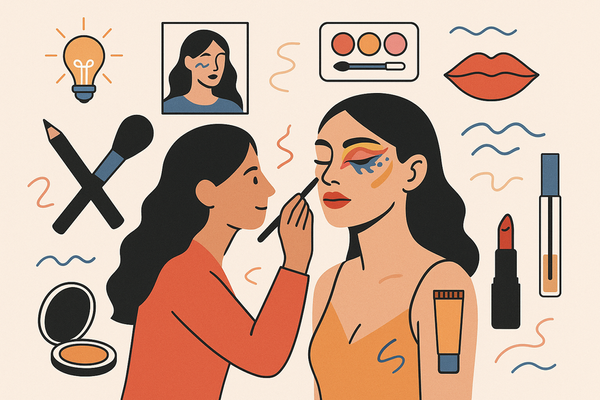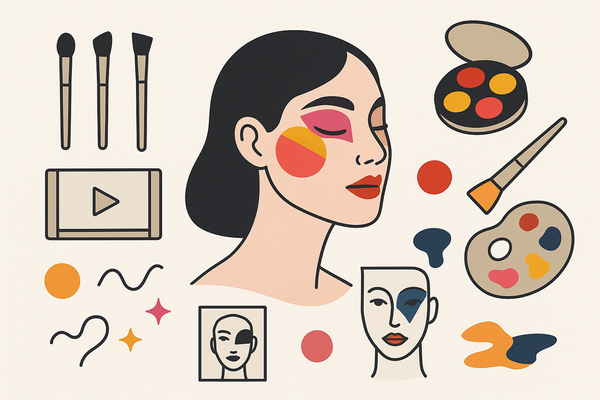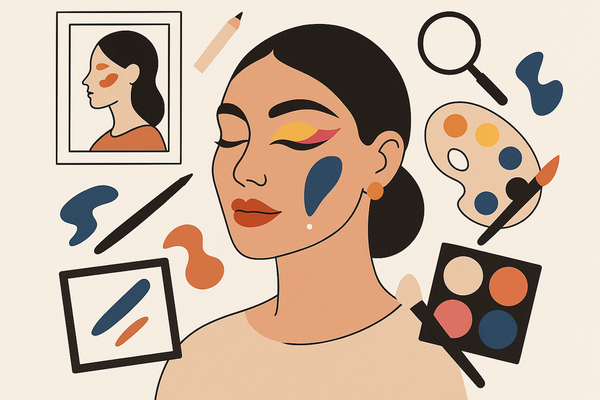The Ultimate Guide to the Essential Makeup Brush Set for Flawless Application
Discover the essential makeup brush set for flawless application, including tips for beginners, face vs eye brushes, and more. Elevate your makeup routine.

Estimated reading time: 6 minutes
Key Takeaways
- Core set of six brushes covers all steps from base to detail with precision.
- Beginners thrive on a simplified kit of versatile multi‐taskers.
- Face vs eye brushes differ in size, density, and purpose for targeted application.
- Synthetic and natural fibers each excel with specific formulas—choose accordingly.
- Kabuki brushes deliver an airbrushed finish for powders, blush, and bronzer.
- Maintenance matters: clean brushes biweekly to extend lifespan and performance.
Table of Contents
- Introduction
- 1. Understanding the Essential Makeup Brush Set
- 2. Best Brushes for Beginners
- 3. Face vs Eye Brushes
- 4. Synthetic vs Natural Brushes
- 5. Kabuki Brush Uses
- 6. Conclusion and Buying Guide
- 7. Call-to-Action
Introduction
An essential makeup brush set serves as the foundation of every successful makeup routine, whether you’re a novice just starting or a seasoned pro. This toolkit delivers the right applicators for each product, saving time and boosting precision. By selecting the ideal brushes, you’ll achieve a smoother, more even finish in fewer steps.
For personalized brush recommendations and step-by-step guidance, try out Makeup Check AI, which uses AI to analyze your look and suggest the right tools for the job.
In this guide, you’ll discover:
- Best brushes for beginners to reduce overwhelm
- Face vs eye brushes and how each shapes your look
- Synthetic vs natural brushes and which materials excel
- Kabuki brush uses for that airbrushed, streak-free finish
Whether you’re packing your first palette or upgrading your pro kit, this complete guide will walk you through every tool you need. Let’s dive into the world of brush shapes, bristle types, and expert tips to build your essential makeup brush set.
1. Understanding the Essential Makeup Brush Set
A well‐curated toolkit is the secret to every polished look. An essential makeup brush set covers every core step of your routine—no extras, no gaps. “Essential” means one tool per step: base, conceal, set, sculpt, and define. With six versatile brushes, you’ll create a professional finish without digging through drawers.
Must-Have Brushes in Your Essential Makeup Brush Set
- Foundation Brush
• Flat or slightly tapered head for liquid or cream bases
• Blends product seamlessly, preventing streaks
• Real-world tip: Press and buff in small circles for even coverage (how to apply foundation evenly) - Concealer Brush
• Small, flat paddle with firm edges
• Pinpoint blemishes, dark circles, and redness
• Pro note: Use the tip to reach inner eye corners for spotless coverage - Powder Brush
• Large, fluffy dome to set foundation with loose or pressed powders
• Distributes product evenly, minimizing flashback in photos
• Expert insight: Sweep in broad strokes, then press down to lock powder - Blush Brush
• Angled or rounded head for precise cheek pigment placement
• Soft bristles diffuse color for a natural flush
• Tip: Tilt upward into the apples of cheeks for lifted definition - Eyeshadow Brush
• Flat shader to pack lid color or fluffy blender for soft edges
• Dual-purpose: apply and diffuse pigment from lash line to brow bone
• Trick: Start light, build intensity gradually to avoid fallout - Eyeliner/Brow Brush
• Thin, angled edge for sharp liner wings or brow filling
• Creates crisp lines and hair-like strokes
• Technique: Dip in powder or gel, wipe excess, then drag along lash line
With one brush per key step, beginners avoid overwhelm and pros save setup time. This set replaces bulky multipacks and random tools, focusing on quality over quantity. Each brush has a clear function—from base coverage to final detail—ensuring a foolproof path to a flawless finish.
2. Best Brushes for Beginners
Less is more for newcomers. A concise, versatile kit reduces confusion and builds confidence.
Recommended Brushes for Beginners
- Foundation Brush or Beauty Sponge
• A flat brush or latex-free sponge makes blending cream and liquid bases foolproof
• Damp sponges absorb minimal product, offering a skin-like finish - Blush/Contour Brush
• Slightly tapered or angled head doubles for cheek color and light contour
• Teaches bronze and blush techniques with one tool - Powder Brush
• Large dome to set foundation, bake under eyes, or apply all-over shimmer - Eyeshadow Brush
• Medium-size flat or fluffy brush that packs and blends shadow
• Perfect for simple day looks and gradient effects - Eyeliner/Brow Brush
• Angled micro brush for winged liner or brow hairs with pomade or powder
By mastering five core brushes, new users can execute broad strokes and precise details without feeling overwhelmed. As skills grow, add specialized tools like crease or smudge brushes.
3. Face vs Eye Brushes
Choosing between face and eye brushes comes down to size, density, and purpose. A minimalist kit may double-up tools, while a larger set offers fine control.
Face vs Eye Brushes Defined
- Face Brushes
• Designed for broad areas—cheeks, forehead, jawline
• Examples: foundation, powder, blush, and contour brushes
• Features: full dome or angled head, softer fibers for smooth blending - Eye Brushes
• Crafted for small canvases—lids, crease, lower lash line, brows
• Examples: flat shader, crease blender, pencil brush, angled liner brush
• Features: dense or tapered tips, firmer bristles for precision
4. Synthetic vs Natural Brushes
One of the biggest debates in makeup is synthetic vs natural brushes. Each material offers distinct advantages.
Synthetic vs Natural Brushes Explained
- Synthetic Brushes
• Made from nylon, polyester, or taklon fibers
• Excel with liquid and cream products—foundations, cream blushes, concealers
• Hypoallergenic, cruelty-free, budget-friendly, and quick-drying - Natural Brushes
• Crafted from animal hair—goat, pony, squirrel, or sable
• Porous structure picks up finely milled powders and blends pigments seamlessly
• Softer feel but higher cost and ethical considerations
5. Kabuki Brush Uses
The kabuki brush is famed for its short handle and densely packed dome. It’s the ideal tool for a streak-free, airbrushed finish.
Kabuki Brush Applications
- Powder Foundation
• Buff mineral or loose powder foundation in circular motions starting from the face center - Blush and Bronzer
• Gently swirl cream or powder formulas for soft transitions between colors - Finishing Powder
• Press and roll to lock in makeup, reduce shine, and achieve a second-skin finish
6. Conclusion and Buying Guide
Your essential brush set is an investment in confidence and creativity. From face vs eye brushes to synthetic vs natural fibers and kabuki advantages, you have the blueprint to assemble a kit that suits your style and products.
Actionable Buying Tips
- Begin with six core brushes: foundation, concealer, powder, blush, eyeshadow, eyeliner/brow
- Invest in quality bristles—better fibers last longer and apply product more evenly
- Match materials to formulas: synthetic for creams/fluids; natural or high-end synthetic for powders
- Add a kabuki brush for seamless buffing of mineral or finishing powders
- Clean brushes every 1–2 weeks to maintain shape and hygiene (clean makeup brushes tips)
7. Call-to-Action
Share your favorite essential makeup brush set tools or tips in the comments below. Check out our related posts on brush cleaning best practices and advanced eye makeup techniques for professional results. Let’s build the perfect kit together—tell us what you recommend!
FAQ
- How often should I clean my makeup brushes?
Ideally every 1–2 weeks to remove product buildup, bacteria, and oils. - Can I use synthetic brushes for powder products?
While synthetic brushes can handle powders, natural or dense synthetic fibers often pick up and distribute powders more evenly. - Do I need a separate kabuki brush?
A kabuki brush is optional but excels at buffing powders and achieving an airbrushed effect that standard brushes can’t match. - What’s the best brush for beginners?
Start with a foundation brush or sponge, a blush/contour brush, powder brush, eyeshadow brush, and an eyeliner/brow brush. - How do I choose between face and eye brushes?
Face brushes are larger and softer for broad areas, while eye brushes are smaller and firmer for precision work.




